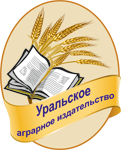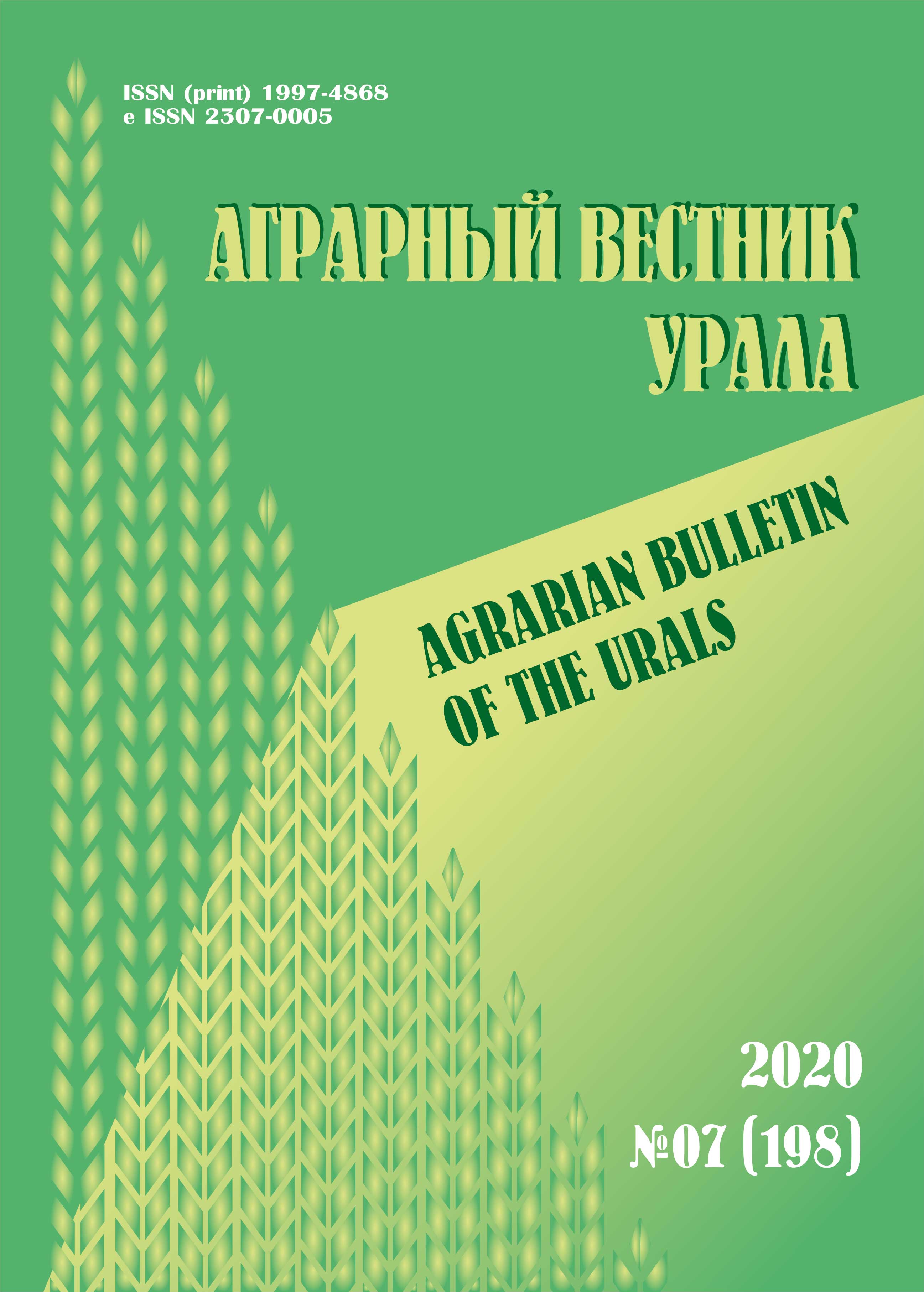Abstract. The development of cytosterile maize hybrids in Russia is a necessary condition for their wide implementation into production. To develop such hybrids, it’s greatly relevant to be aware how the lines react to sterile cytoplasm. The study was carried out at the Agricultural Research Center “Donskoy” (“ARC “Donskoy”) in 2010–2021. The purpose of the current study was to classify the new self-pollinated maize lines according to the composition of the fertility-restoring genes of the Paraguay (C) type of CMS, to optimize the number of analyzing test-crosses. Methods. As initial material there have been used 45 new self-pollinated maize lines and 8 sources of sterility with different genetic structure. The method of complete top-crosses there have been identified 360 maize hybrids, used for estimation of the new lines’ reaction. Results. According to the study results, the sterility-fixing lines KV 204, SP 286, DS 255, SP 207, DS 180, which had no fertility-restoring genes in the dominant state, belonged to the I class. As the natural complete constant fertility-restorers there has been recommended to use the lines of the VIII class KV 498, KV 272, KV 7/07, SP 357, RD 261, DS 295, SP 210, SP 197, DS 177, DS 188, having all three dominant genes Rf4, Rf5, Rf6 in the genotype. The incomplete sterility-fixing lines included the lines of the II–IV classes (KV 3, RD 245, SP 198, etc.). The incomplete fertility-restoring lines were the lines of the V–VII classes (KV 469, RD 331, KV 276, etc.). There has been found out that the most common lines were the lines of the V (24.4%) and VIII (22.3 %) classes. The scientific novelty of the study was an optimal number and genetic structure of the analyzers WF 9c of the V class, Lc of the VI class and W 401c of the VII class, which are necessary for crossings and allow identifying lines according to the fertility-restoring genes.
self-pollinated lines, test-crossing hybrids, fertility-restoring genes, dominance, recessivity
1. Sotchenko V. S. Sovremennaya tekhnologiya vozdelyvaniya kukuruzy [Modern technology of maize cultivation]. Moscow: RosAgroKhim, 2009. 127 p. (In Russian.)
2. Shi Z.-W., He Q., Zhao Z.-F., Liu X.-W., Zhang P., Cao M.-J. Exploration and utilization of maize male sterility resources // Hereditas 20 February 2022. Vol. 44. Iss 2. Pp. 134-152. DOI:https://doi.org/10.16288/j.yczz.21-327.
3. Lukovkina N. I., Suprunov A. I. Reaktsiya novykh ul’trarannespelyh i rannespelykh liniy kukuruzy na TsMS-m tipa [Reaction of new ultra-early and early ripening maize lines to CMS-m type] // Aktual’nye voprosy biologii, selektsii, tekhnologii vozdelyvaniya i pererabotki maslichnykh i drugikh tekhnicheskikh kul’tur: sbornik materialov X Vserossiyskoy konferentsii molodykh uchenykh i spetsialistov. Krasnodar, 2019. Pp. 109-112.
4. Weider C., Stamp P., Christov N., Husken A., Foueillassar X., Camp K., Munsch M. Stability of cytoplasmic male sterility in maize under different environmental conditions // Srop Science. 2009. Vol. 49. Iss. 1. Pp. 77-84. DOI:https://doi.org/10.2135/cropsci2007.12.0694.
5. Zhang H., Cui G., Wang C., Wang X., Hao Y., Du J., Wang Y., Sun Y. Breeding and Characteristics of a New Male Sterile Line of Maize, Jinyu1A // Scientia Agricultura Sinica 1 November 2020. Vol 53. Iss. 21. Pp. 4322-4332. DOI:https://doi.org/10.3864/j.issn.0578-1752.2020.21.002.
6. Loussaert D., DeBruin J., San Martin J. P., Schussler J., Pape R., Clapp J., Mongar N., Fox T., Albertsen M., Trimnell M., Collinson S., Shen B. Genetic male sterility (Ms44) increases maize grain yield // Srop Science. 2017. Vol. 57. Iss. 5. Pp. 2718-2728. DOI:https://doi.org/10.2135/cropsci2016.08.0654.
7. Bohra A., Jha U.C., Adhimoolam P., Bisht D., Singh N.P. Cytoplasmic male sterility (CMS) in hybrid breeding in field crops // Plant Cell Reports. 2016. No. 35. Pp. 967-993. DOI: https://doi.org/10.1007/s00299-016-1949-3; EDN: https://elibrary.ru/WUTOOP
8. Khatefov E. B., Shomakhov B. R., Kushkhova R. S., Kudaev R. A., Khashirova Z. T., Gyaurgiev A. Kh. Kharakteristika rediploidnykh liniy kukuruzy selektsii VIR po kombinatsionnoy sposobnosti i reaktsii na TSMS [Combining ability and response to CMS in reverse diploid maize lines developed at VIR] // Plant Biotechnology and Breeding. 2019. No. 2 (4). Pp. 15-23. DOI:https://doi.org/10.30901/2658-6266-2019-4-o2. (In Russian.)
9. Kravtsov V. I., Govor E. M., Shimansky L. P. Izucheniye vliyaniya tipa TSMS na selektsionno-tsennyye priznaki gibridov kukuruzy [Study of the influence of the CMS type on the breeding and valuable traits of maize hybrids] // Agriculture and Breeding in Belarus. 2021. No. 57. Pp. 415-419. (In Russian.)
10. Kravtsov V. I. Govor E. M., Shimansky L. P. Izucheniye iskhodnogo materiala kukuruzy po spetsifichnosti vzaimodeystviya genotipa i tipa tsitoplazmaticheskoy muzhskoy steril’nosti [The study of the initial material of maize according to the specificity of the correlation between the genotype and the type of cytoplasmic male sterility] // Agriculture and Breeding in Belarus 2021. No. 57. Pp. 429-434. (In Russian.)
11. Kibalnik O. P., Elkonin L. A. Vliyaniye raznykh tipov steril'nykh tsitoplazm (A3, A4, 9E) na kombinatsionnuyu sposobnost’ TSMS-liniy sorgo na kombinatsionnuyu sposobnost’ TSMS-liniy sorgo [Influence of different types of sterile cytoplasms (A3, A4, 9E) on the combining ability of CMS lines of sorghum] // Vavilov Journal of Genetics and Breeding. 2020. No. 24 (6). Pp. 549-556. DOI:https://doi.org/10.18699/VJ20.648. (In Russian.)
12. Kibalnik O. P. Perspektivy ispol'zovaniya tsms-liniy s raznymi istochnikami steril’nosti v selektsii sorgo [Prospects for the use of CMS lines with different sources of sterility in the selection of sorghum] // Bulletin of NSAU (Novosibirsk State Agrarian University). 2020. No. 1 (54). Pp 16-23. DOI:https://doi.org/10.31677/2072-6724-2020-54-1-16-23. (In Russian.)
13. Gorbacheva A. G. Selektsionnyye i geneticheskiye aspekty ispol’zovaniya muzhskoy steril’nosti: avtoref. dis. … d-ra s.-kh. nauk [Breeding and genetic aspects of the use of male sterility: abstract of diss. … doctor of agricultural sciences]. Saint-Petersburg: Vavilov Institute of Plant Industry, 2007. 48 p. (In Russian.) EDN: https://elibrary.ru/NOYQON
14. Krivosheev G. Ya. Reaktsiya novykh samoopylennykh liniy kukuruzy na paragvayskiy tip TSMS [Response of the new self-pollinated maize lines on the Paraguay type of CMS] // Taurida Herald of the Agrarian Sciences. 2020. No. 4 (24). Pp. 90-97. DOI:https://doi.org/10.33952/2542-0720-2020-4-24-90-97. (In Russian.) EDN: https://elibrary.ru/KSINDK
15. Gorbacheva A. G. Otkrytiye i geneticheskaya identifikatsiya tipov TSMS kukuruzy [Discovery and genetic identification of CMS types in corn] // Kukuruza I sorgo. 2019. No. 2. Pp. 22-34. (In Russian.) DOI: https://doi.org/10.25715/KS.2019.2.31830; EDN: https://elibrary.ru/TIJUXC
16. Perevyazka D. S., Suprunov A. I. Reaktsiya novykh rannespelykh i srednerannikh avtodiploidnykh liniy kukuruzy na TSMS-m tipa [Reaction of new early-ripening and mid-early autodiploid maize lines to CMS-m type] // Aktual’nye voprosy biologii, selektsii, tekhnologii vozdelyvaniya i pererabotki maslichnykh i drugikh tekhnicheskikh kul’tur: sbornik materialov X Vserossiyskoy konferentsii molodykh uchenykh i spetsialistov. Krasnodar, 2019. Pp. 128-131. (In Russian.)
17. Zaytsev S. A. Ispol’zovanie tsitoplazmaticheskoy muzhskoy steril’nosti kukuruzy [The use of cytoplasmic male sterility in maize] // Nauchnoe obespechenie ustoychivogo razvitiya agropromyshlennogo kompleksa v usloviyakh aridizatsii klimata. Sbornik materialov mezhdunarodnoy nauchno-prakticheskoy konferentsii, posvyashchennoy 35-letiyu FGBNU ROSNIISK “Rossorgo”. Saratov, 2021. Pp. 114-120. (In Russian.)
18. Khatefov E. B., Kerv Yu. A., Boyko V. N., Golovina M. A., Appaev S. P. Rasshireniye geneticheskogo polimorfizma iskhodnogo selektsionnogo materiala kukuruzy metodom rediploidizatsii tetraploidnykh populyatsiy [Expansion of the genetic polymorphism of the initial selection material of corn by the method of redyploidization of tetraploid populations] // Taurida Herald of the Agrarian Sciences. 2018. No. 4 (16). Pp. 192-203. DOI:https://doi.org/10.25637/TVAN.2018.04.18. (In Russian.)
19. Krivosheev G. Ya., Ignatyev A. S. Vosstanovitel’naya i zakrepitel’naya sposobnost’ liniy kukuruzy v steril’noy tsitoplazme “M” i “S” tipov TSMS [Reconstructive and stabilizing ability of the maize lines insterile cytoplasm “M” and “C” types of CMS] // Grain Economy of Russia. 2019. No. 2 (62). Pp. 38-41. DOI:https://doi.org/10.31367/2079-8725-2019-62-2-38-41. (In Russian.) EDN: https://elibrary.ru/SGOYKU
20. Beltyukov L. P. Sort, tekhnologiya, urozhay [Variety, technology, yield]. Rostov-on-Don: “Terra-Print”, 2007. 160 p. (In Russian.)
21. Volf V. P., Litun P. P. Metodicheskiye rekomendatsii po primeneniyu matematicheskikh metodov dlya analiza eksperimental'nykh dannykh po izucheniyu kombinatsionnoy sposobnosti [Methodical recommendations on the use of mathematical methods to analyze experimental data on the study of combining ability]. Kharkov, 1980. 76 p. (In Russian.)
22. Gontarovskiy V. A. Geneticheskaya klassifikatsiya istochnikov tsitoplazmaticheskoy muzhskoy steril’nosti kukuruzy [Genetic classification of sources of cytoplasmic male sterility of maize] // Genetika. 1971. No. 9. Pp. 22-30. (In Russian.)









